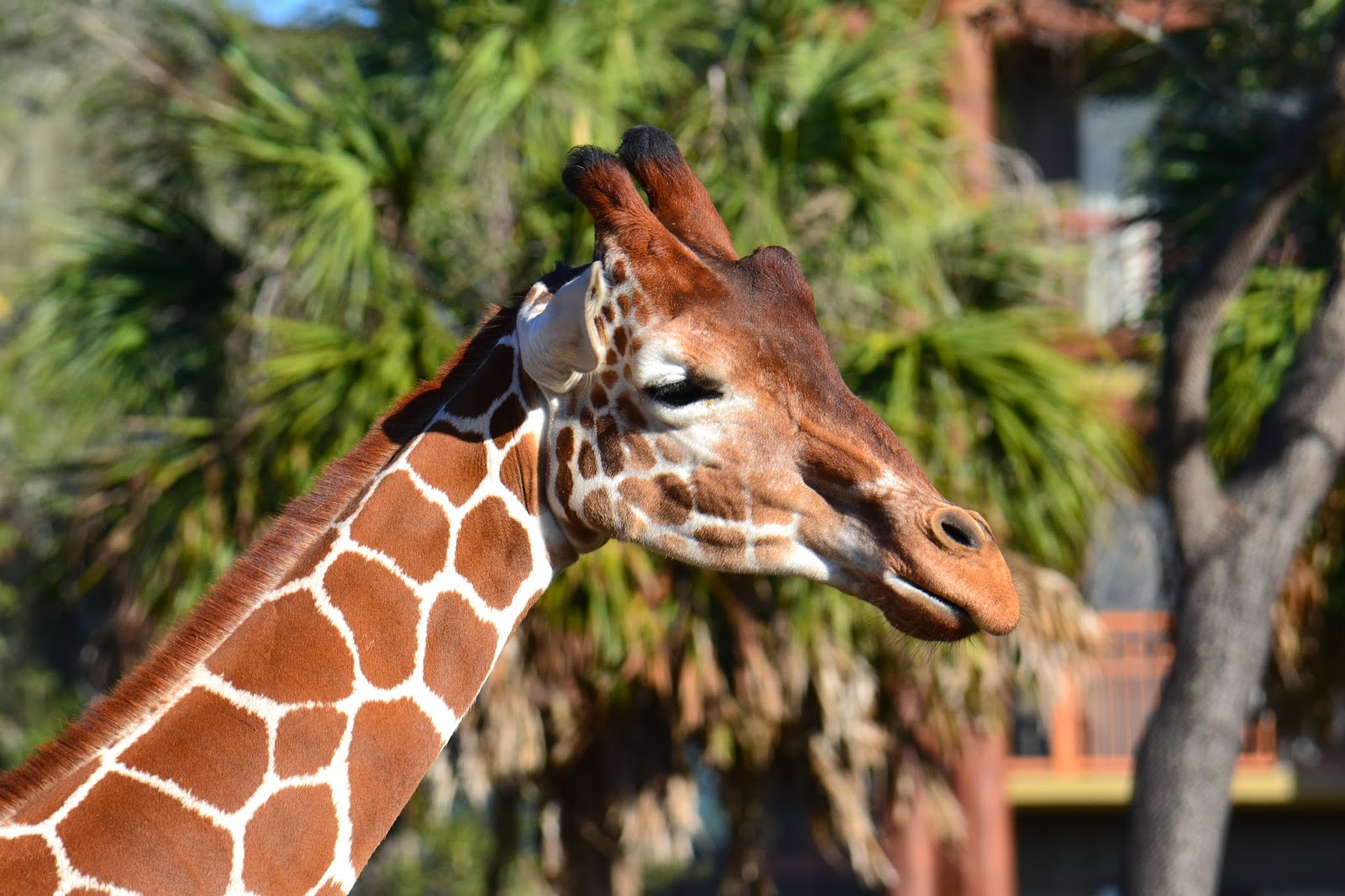Habitat: African Savannah
Status: Low Risk
DAK Location: Kilimanjaro Safari and Animal Kingdom Lodge
The giraffe is one of the most recognizable animals on the planet with its height, huge neck, big eyes, and color patterns. The neck, reaching 6 feet in length, has the same number of vertebrae that humans have, seven. Of course, a giraffe’s neck bones are much larger, stretching over 10 inches in length. At eighteen feet, the giraffe is the tallest of all land animals. The back legs only look smaller than the front giving the animal a odd gait. Still, it can run up to 45 mph. Also, look closely and you will see that both legs on the same side move together, a rarity in the animal kingdom.
Everything about the giraffe is super-sized. The tongue is over 20 inches to help with eating leaves in tall trees. An adult may eat up to 75 pounds of grass and leaves. Like cows, giraffes are ruminants. That is, they chew their food and then regurgitate the partially digested foliage to chew again as grass and leaves are nutrient poor and difficult to digest. The heart in an effort to pump blood far from it can be 2 feet wide and weigh 25 pounds. The lungs can hold 12 gallons of air. At about eight feet, it also has the largest tail of any land animal.
Giraffes are hunted for their pelts. It is believed that no two giraffes have the same color pattern. The distinctive coloration does provide camouflage particularly for calves hiding on the plains. They also suffer from habitat destruction. However, they are not considered endangered. There is an estimated 100,000 to 150,000 giraffes in Africa with the eastern and southern populations being the most stable.





No comments:
Post a Comment